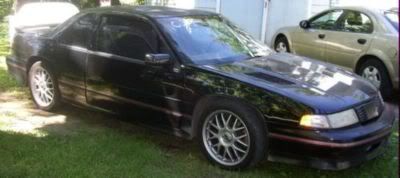OK, before I go any farther with the alternator...which I installed yesterday:
Has anyone put the '96--'97 alternator onto an earlier vehicle?
From on-line photos, it looks like the '96--'97 alternator is the newer, more reliable CS130D. Again, based on on-line photos, it appears that it may be possible for the earlier duct to connect to the later alternator. The main difficulty is that the lower/main mounting lug is entirely different. I'm not sure if the new alternator also requires a change to the giant aluminum accessory mount plate on the end of the engine.
Is the accessory mount plate different from '95 to '96?
There is a small bracket on the firewall side of the engine that the main/longer alternator bolt screws into. Is that different between '95 and '96?
All of these questions relate to the possibility of installing the later alternator on the earlier bracketry; can it be done with minor fabricating or does it require the newer mounting plate and such?
I'd be really thrilled to get rid of the P. O. S. early CS130 alternator!
Later CS130D: From napaonline.com p/n RAY 134715

Earlier CS130: Also from www.napaonline.com p/n RAY 2134532D

Has anyone put the '96--'97 alternator onto an earlier vehicle?
From on-line photos, it looks like the '96--'97 alternator is the newer, more reliable CS130D. Again, based on on-line photos, it appears that it may be possible for the earlier duct to connect to the later alternator. The main difficulty is that the lower/main mounting lug is entirely different. I'm not sure if the new alternator also requires a change to the giant aluminum accessory mount plate on the end of the engine.
Is the accessory mount plate different from '95 to '96?
There is a small bracket on the firewall side of the engine that the main/longer alternator bolt screws into. Is that different between '95 and '96?
All of these questions relate to the possibility of installing the later alternator on the earlier bracketry; can it be done with minor fabricating or does it require the newer mounting plate and such?
I'd be really thrilled to get rid of the P. O. S. early CS130 alternator!
Later CS130D: From napaonline.com p/n RAY 134715
Earlier CS130: Also from www.napaonline.com p/n RAY 2134532D













Comment